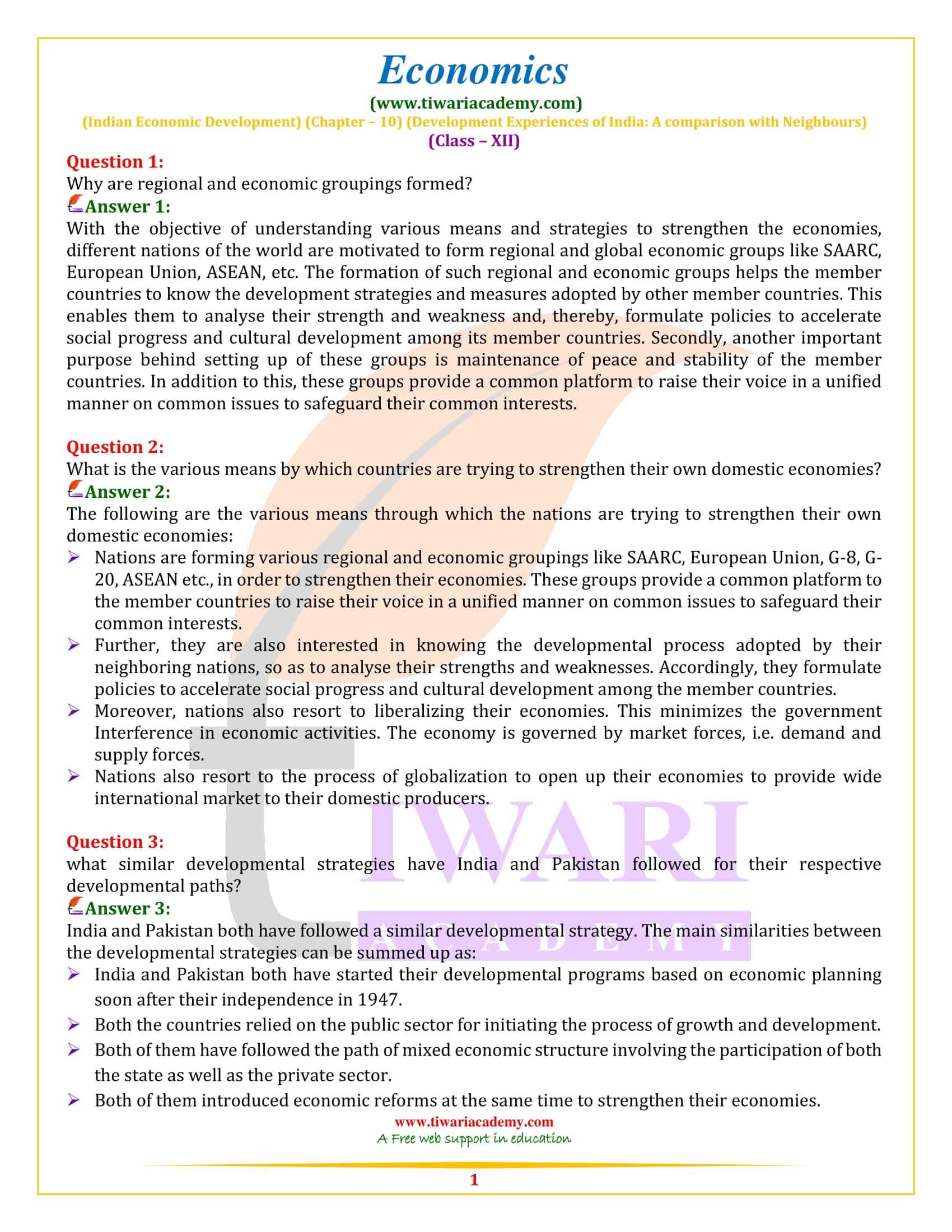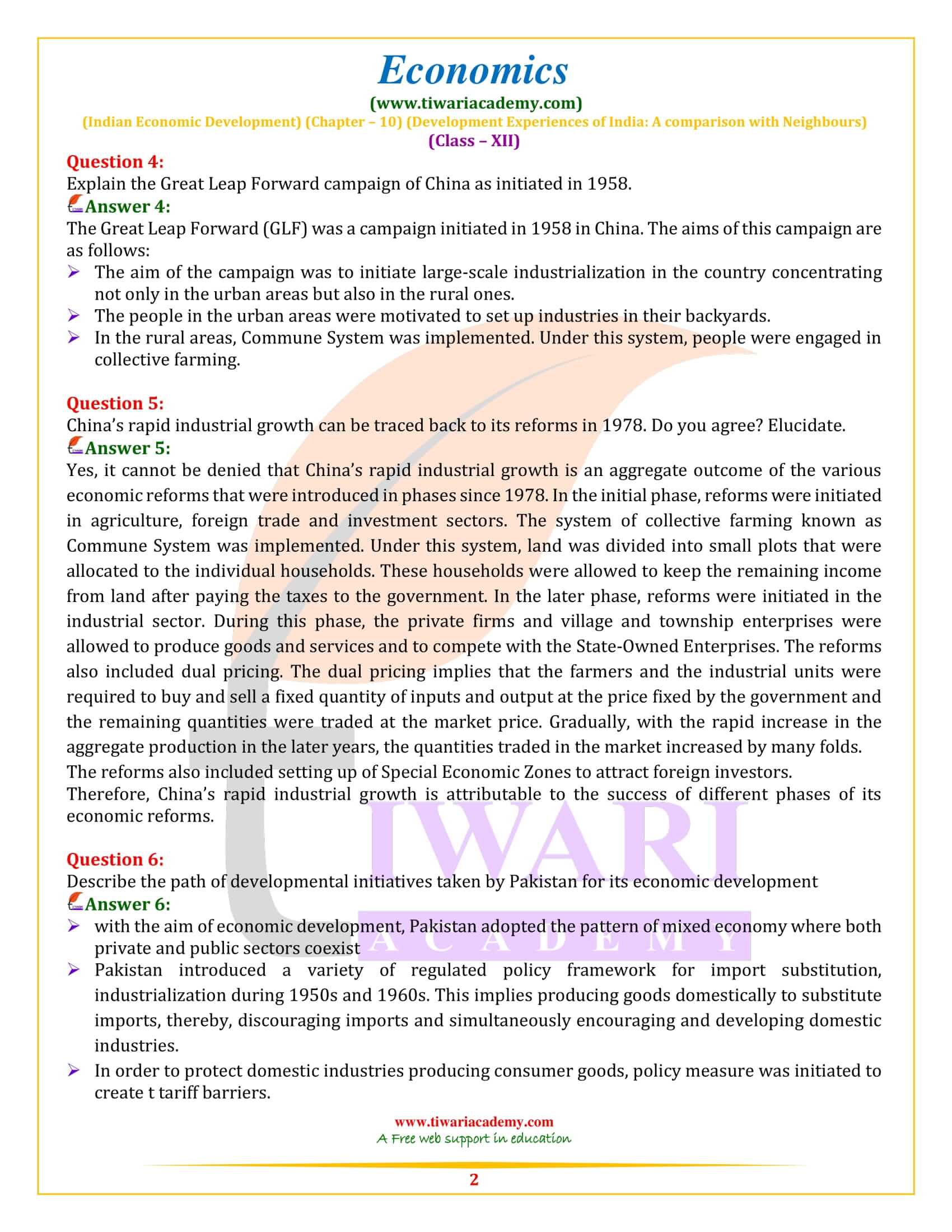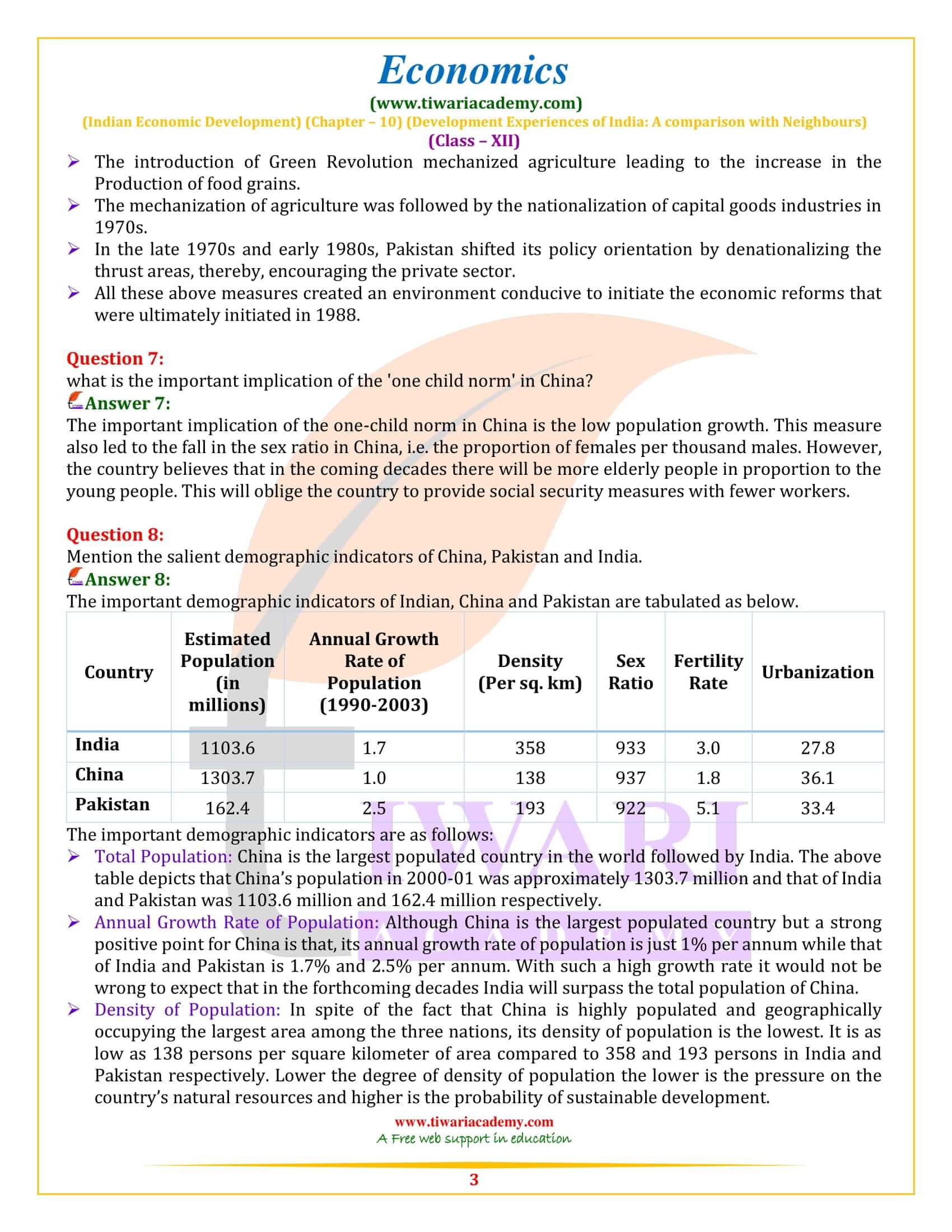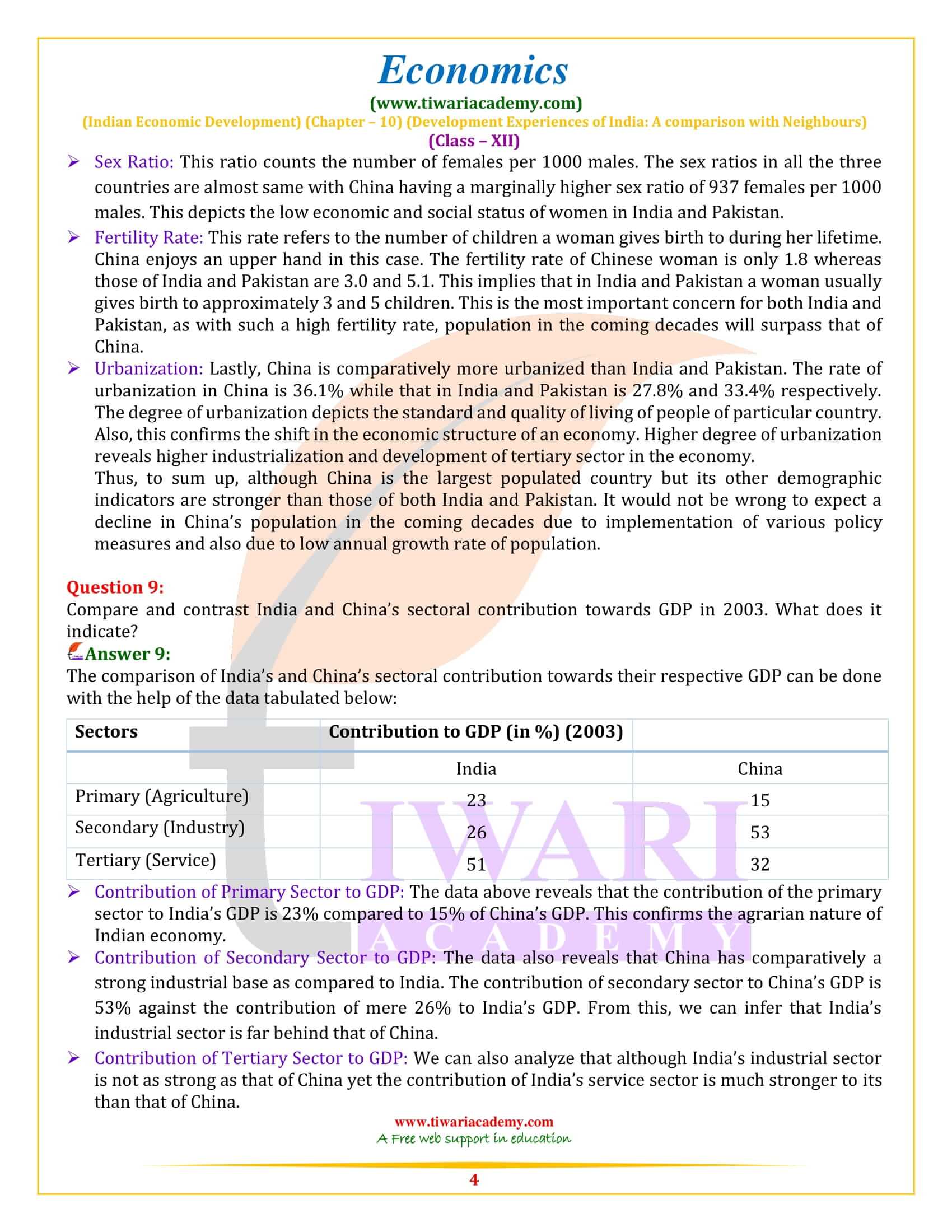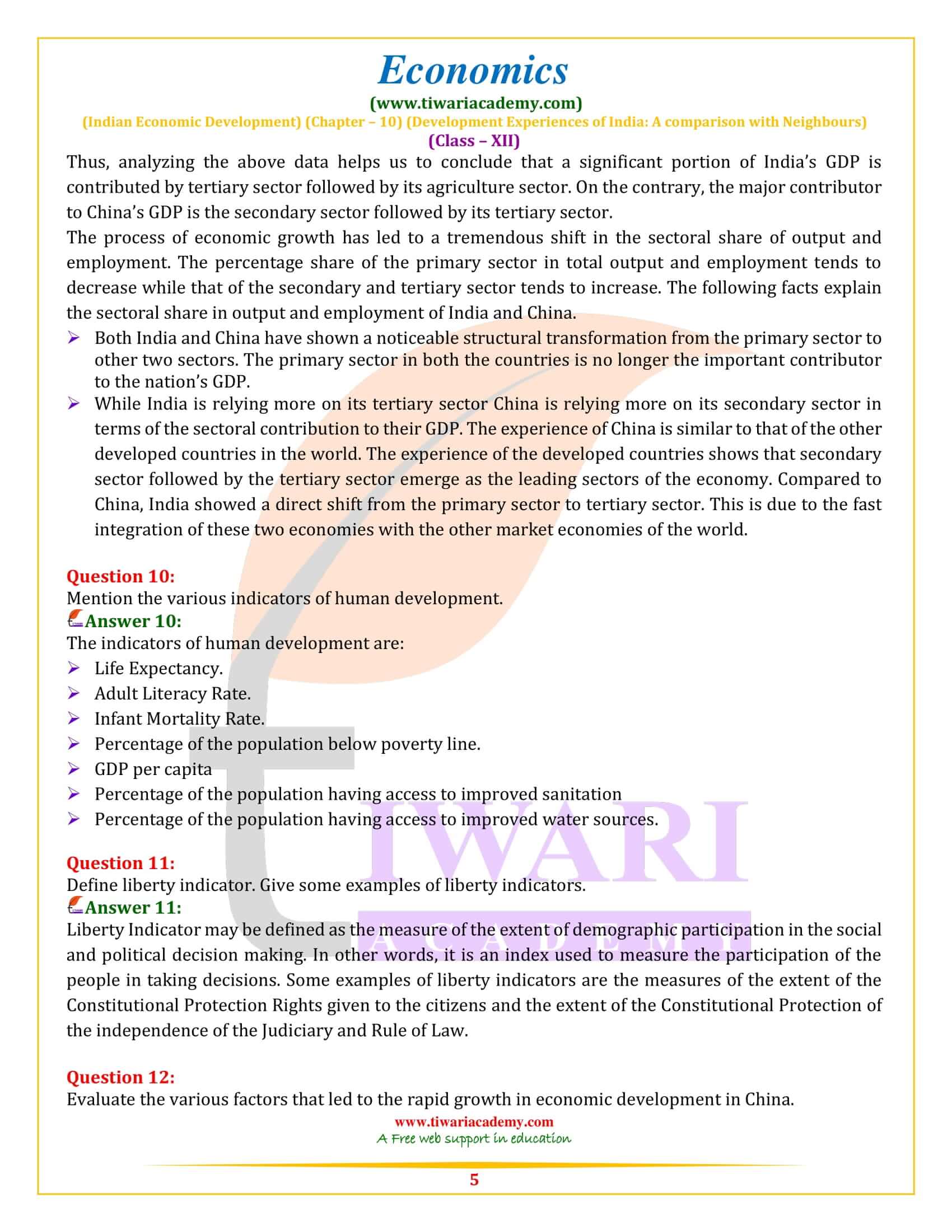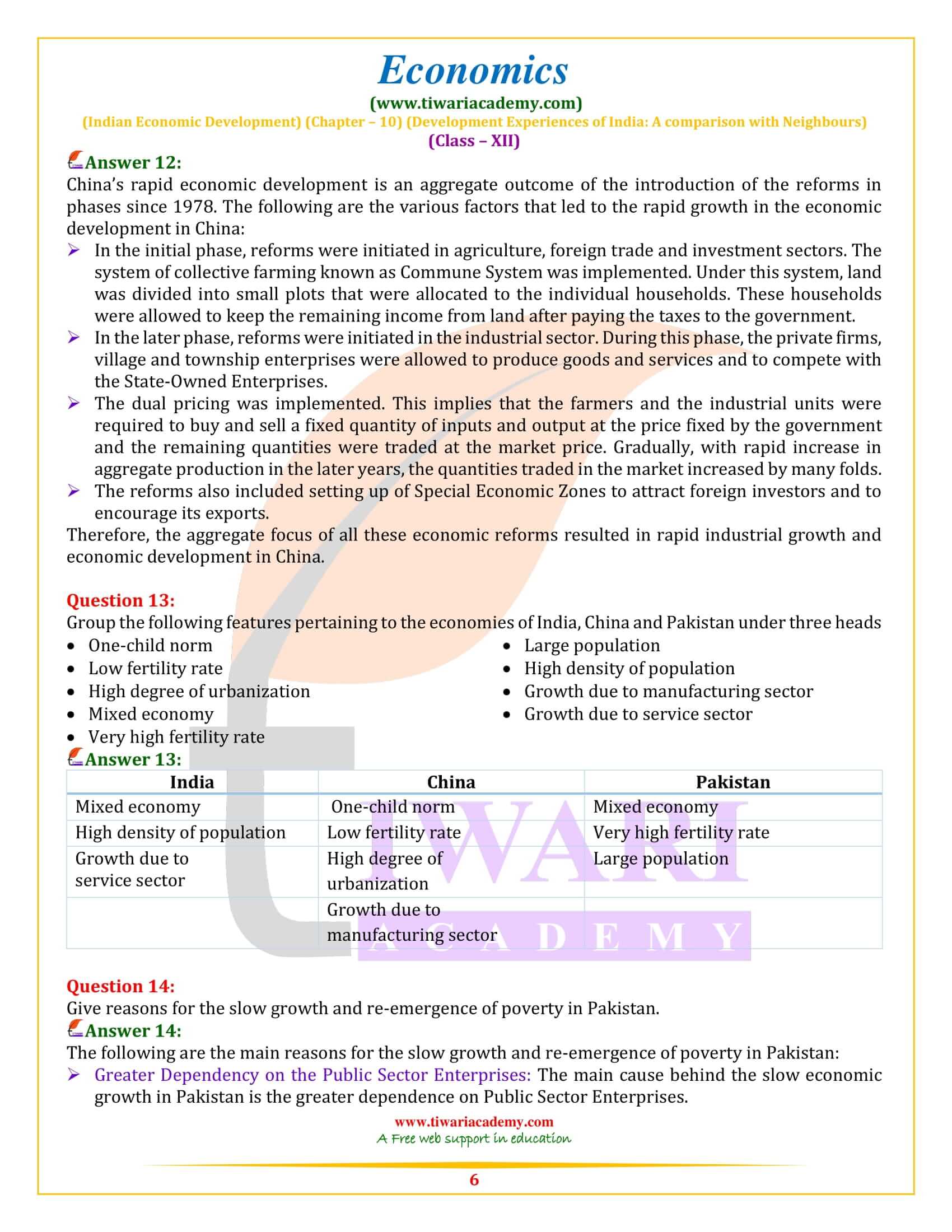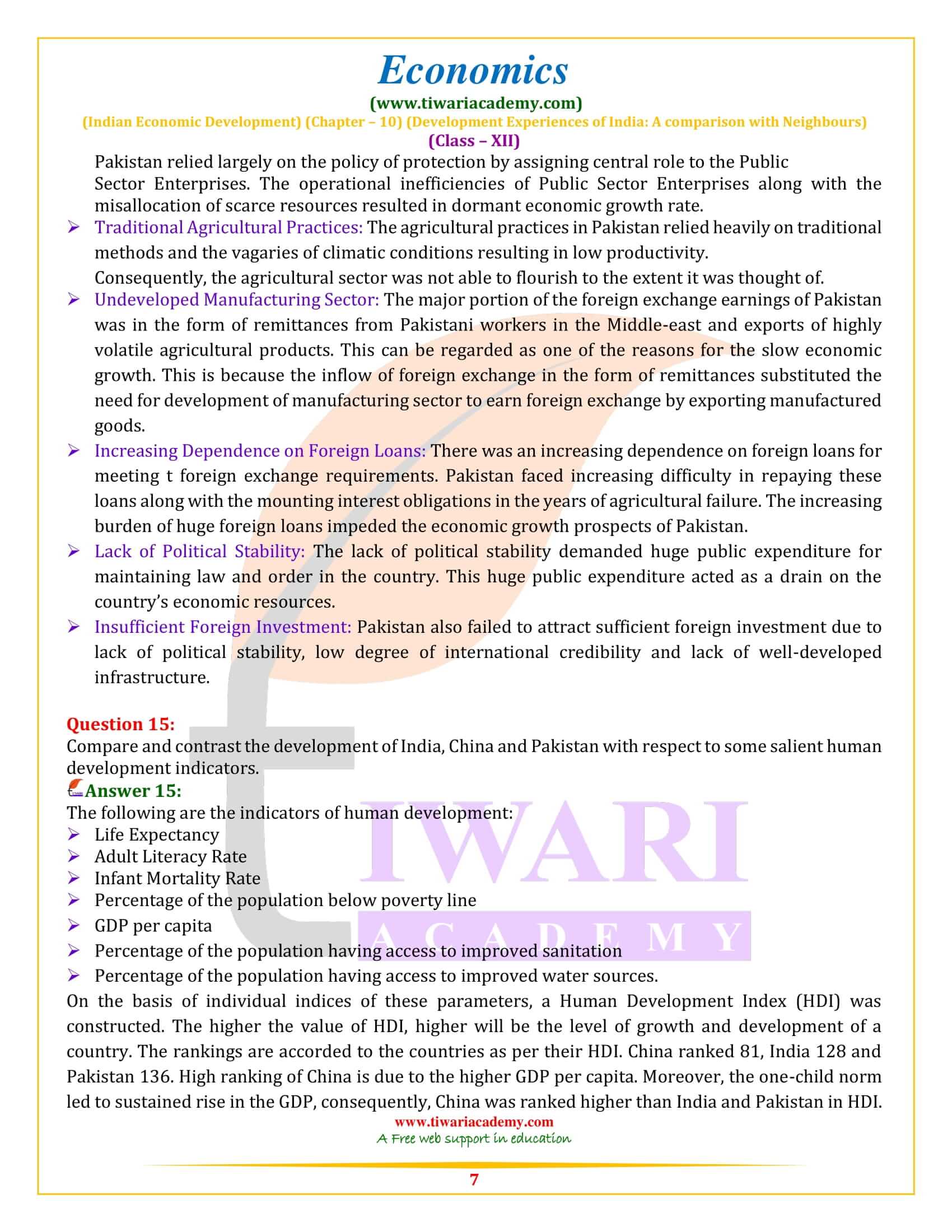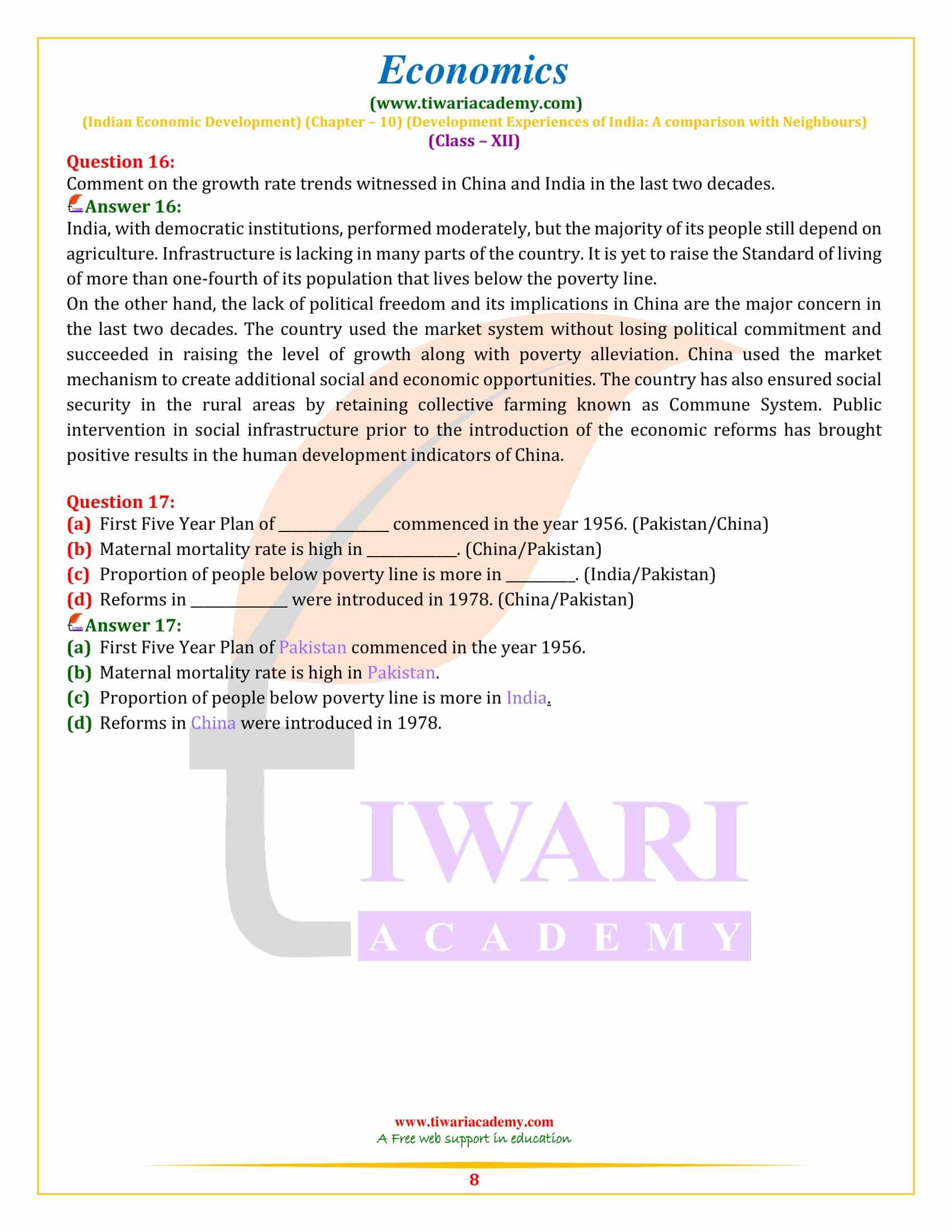NCERT Solutions for Class 12 Indian Economic Development Chapter 10 Comparative Development Experiences of India and its Neighbours in Hindi and English Medium updated for 2024-25 session. All the questions of exercises and additions questions answers with MCQ sets of class 12 Economics chapter 10 are given here.
Class 12 Indian Economic Development Chapter 10 Question Answers
Introduction and Developmental Path
Over the last twenty years around, the economic transformation that’s happening in several countries across the globe, part thanks to the method of globalization, has each short in addition as long implications for every country, including India. Nations are primarily making an attempt to adopt varied means by which to strengthen their own domestic economies. The present impact, they’re forming regional and international economic groupings like the SAARC, European Economic Community, ASEAN, G-8, G-20, BRICS etc.
Diplomatic ways of sustaining economies
Additionally, there’s conjointly an increasing avidness on the elements of varied nations to undertake and perceive the biological processes pursued by their neighbour nations because it permits them to raise comprehend their own strengths and weaknesses vis-à-vis their neighbours. Within the flowering method of globalisation, this can be notably thought-about essential by developing countries as they face competition not solely from developed nations however conjointly amongst themselves within the comparatively restricted economic house enjoyed by the developing world. Besides, an understanding of the opposite economies in our neighbourhood is additionally needed as all major common economic activities within the region hit overall human development during shared setting.
Comparing neighbouring countries
Does one grasp that India, Pakistan and China have several similarities in their biological strategies? All the 3 nations have started towards their biological process path at the identical time. whereas India and Pakistan became independent nations in 1947, People’s Republic of China was established in 1949. All 3 countries had started coming up with their development ways in similar ways.
Whereas India declared its initial Five-Year Plan for 1951-56, Pakistan declared its initial five-year plan, currently referred to as Medium-Term Development Plan, in 1956. China declared its initial Five-Year Plan in 1953. Since 2018, Pakistan is functioning on the idea of 12th Five Year Development Plan (2018-23), whereas, China is functioning on 14th Five Year Plan (2021-25). Till March 2017, India has been following Five-Year Plan- based mostly on development model. India and Pakistan adopted similar ways, like making an outsized public sector and raising public expenditure on social development.
Development of China and Pakistan
China: Once the institution of People’s Republic of China underneath one- party rule, all crucial sectors of the economy, enterprises and lands I hand and operated by people were brought underneath government management. The Great Leap Forward (GLF) campaign initiated in 1958 geared towards industrialising the country on a colossal scale. Folks were inspired to line up industries in their backyards. In rural areas, communes were started. Underneath the Commune system, folks jointly cultivated lands.
In 1958, there have been 26,000 communes covering the majority farm population. The current day quick industrial growth in China will be copied back to the reforms introduced in 1978. China introduced reforms in phases. Within the initial part, reforms were initiated in agriculture, foreign trade and investment sectors. In agriculture, as an example, commune lands were divided into little plots, that were allotted to individual households. They were allowed to stay all financial gain from the land once paying stipulated taxes. Within the later part, reforms were initiated within the industrial sector.
Pakistan:
Whereas watching at numerous economic policies that Pakistan adopted, you may notice several similarities with India. Pakistan conjointly follows the economy model with co-existence of public and personal sectors. Within the late 1950s and 1960s, Pakistan introduced a spread of regulated policy framework. The policy combined tariff protection for producing of goods along with direct import controls on competitor imports.
The plan focused in Agriculture
The introduction of Green Revolution led to mechanisation and increase in publicly investment in infrastructure in chosen areas, that finally led to an increase within the production of foodgrains. This modified the rural structure dramatically. Within the 1970s, nationalisation of capital products industries took place. Pakistan then shifted its policy orientation within the late 1970s and 1980s once the key thrust areas were social controlled and encouragement of personal sector.
Indicators of Human Development
You might have studied concerning the importance of human development indicators within the lower categories and therefore the position of the many developed and developing countries. Allow us look how India, China and Pakistan have performed in a number of the chosen indicators of human development. China is moving before of India and Pakistan. This is often true for several indicators- financial gain indicator like GDP per capita, or proportion of population below personal income line or health indicators like mortality rates, access to sanitation, literacy, anticipation or hunger.
The important indicators of development
China and Pakistan are before of India in reducing proportion of individuals below the personal income and conjointly their performance in sanitation. However, India and Pakistan haven’t been able to save ladies from maternal mortality. In China, for one lakh births, solely 29 women die whereas in India and Pakistan, concerning 133 and 140 ladies die severally. Astonishingly all the 3 countries report providing improved drinking water sources for many of its population. China has the tiniest share of poor among the 3 countries. Verify for yourself how these variations occur. In handling or creating judgements on such queries. However, we must always conjointly note a drag whereas exploiting the human development indicators given on top with conviction.
Other pivotal indicators of development
This happens as a result of these all very vital indicators; however, these don’t seem to be sufficient. Alongside these, we have a tendency to conjointly want what may also be referred as liberty indicators. One such indicator has really been value-added as a live of the extent of democratic participation in social and political decision-making, However, it’s not been given any further weight. Some obvious liberty indicators like measures of the extent of Constitutional protection given to rights of voters or the extent of constitutional protection of the Independence of the Judiciary and therefore the Rule of Law haven’t even been introduced thus far. Without including these and giving them dominant importance within the list, the construction of a human development index may be said to be incomplete and its utility restricted.
Which questions are important from chapter 10 of class 12 Economics?
The following four questions are really important from examination point of view for class 12:
- The great leap forward campaign of China as initiated in 1958.
- Various factors that led to the rapid growth in economic development in China.
- Development strategies that have been followed by India and Pakistan for developing their economies.
- Indicators of human development like- Life expectancy, infant mortality rate, GDP per capita, percentage of population below poverty line.
Is it necessary to remember the data about indicators of human development in chapter 10 of 12th Economics?
Important data/ Indicators must be memorized. Some of them are likely to be asked in the examination.
What rare questions could be asked from chapter 10 of class 12 Economic?
There is a possibility of match the following type of question in chapter 10 of 12th Economics because there is a likelihood of students getting confuse between the policies adopted by China, India and Pakistan as part of their developmental strategy.
